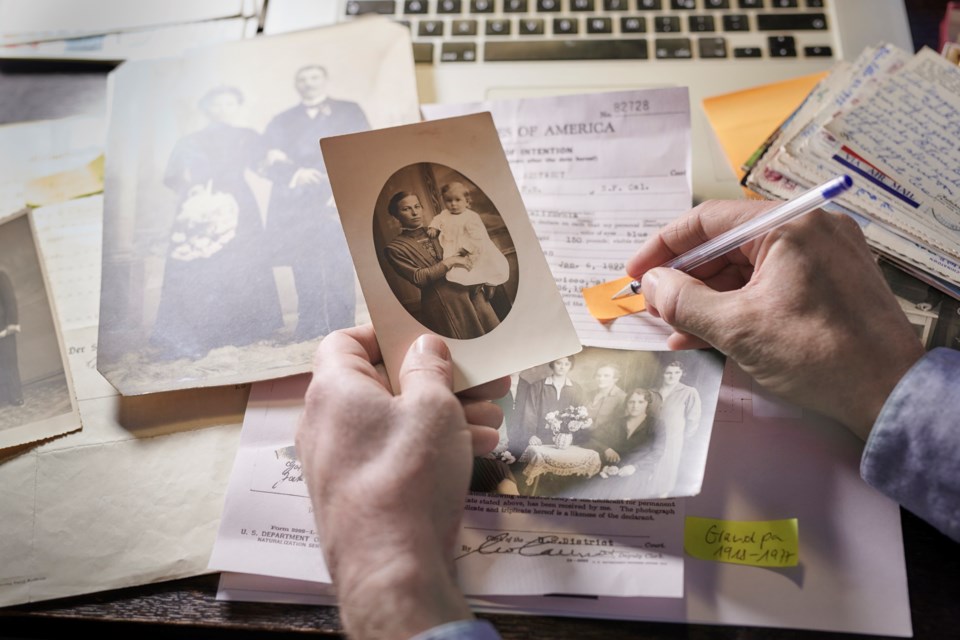Before digital ancestry services and DNA testing became accessible to the general public, building a family tree or finding long-lost relatives required a physical search through documents and archives, or travel to locations where family may have come from.
Although going on a mystery tour to dig up family roots might be fun, having access to records through a computer at home or the library make finding family connections easier, and a little bit less dusty.
Powell River Public Library (PRPL) adult services coordinator Mark Merlino recently gave a workshop on Ancestry Library Edition. He thinks there are many different reasons why people are interested in genealogy and ancestry-related DNA testing.
“I know that some of the happiest people were those who found long-lost relatives, old family photos and documents with details about relatives,” said Merlino.
Ancestry Library Edition is offered to the public at PRPL with full access to genealogical research and is comparable to a paid subscription. However, it is not possible to create or share a personal family tree, but there are “billions of records in the database including obituaries and marriages from the newspaper index, census records, military and government records, memoirs and pictures,” according to information given at the ancestry workshop.
Merlino emphasized that the most plentiful collections are from English-speaking places in North America and Europe and that records are available from the year 1600 to the 1990s.
“If you are lucky you might find surprises,” said Merlino.
One problem with old documents is that last names may not always be spelled the same or may have been changed. The best thing to do is try different spellings or widen the search, according to Merlino.
“You can save the information you find at the library and send it to yourself in an email,” he said.
With access to DNA kits online, knowing where ancestors came from and who they were/are can be conducted through collecting saliva samples and shipping them to a DNA lab. What a person can find out depends on the kind of test, and the service is not free.
One new feature offered by testing is being able to see a range of inherited genetic traits such as lactose intolerance. Another albeit, controversial service is identifying health risk genomes and genetic risk factors for certain diseases a person may have.
There have been privacy and accuracy concerns regarding these kinds of tests.
Merlino has been offering a technology series of programs, called Tech Savvy, since 2014.
“I give workshops on different technology topics that are of interest to the community,” he said. “I know that some of the people who are most passionate about ancestry research are those who were either adopted, had a relative adopted or in some way lost touch with their family.”
Merlino emphasized that ancestry DNA is another service that ancestry.ca offers, but the DNA service is not part of the Ancestry Library Edition.
“The ancestry.ca library edition only has access to records that have been updated,” he added, “like on census results.”
Join the Peak's email list for the top headline right in your inbox Monday to Friday: prpeak.com/account/mailinglist.




